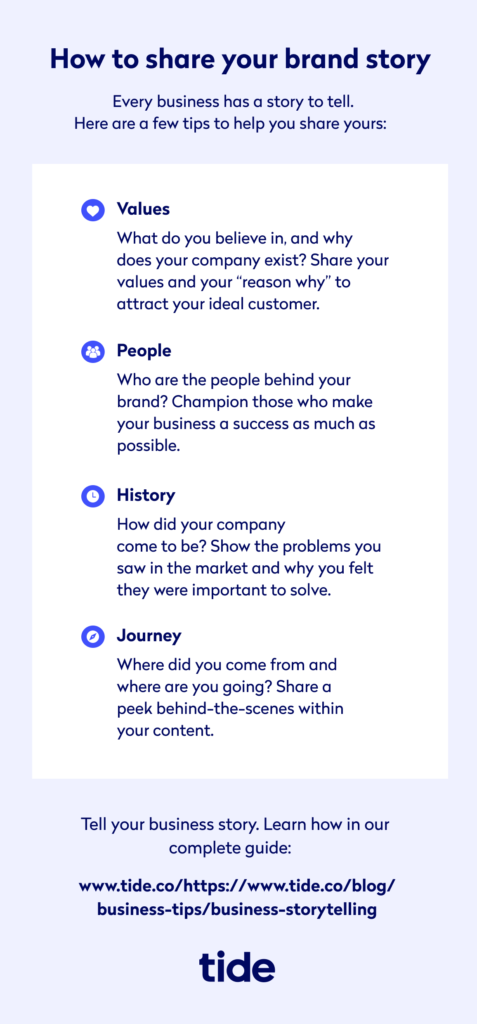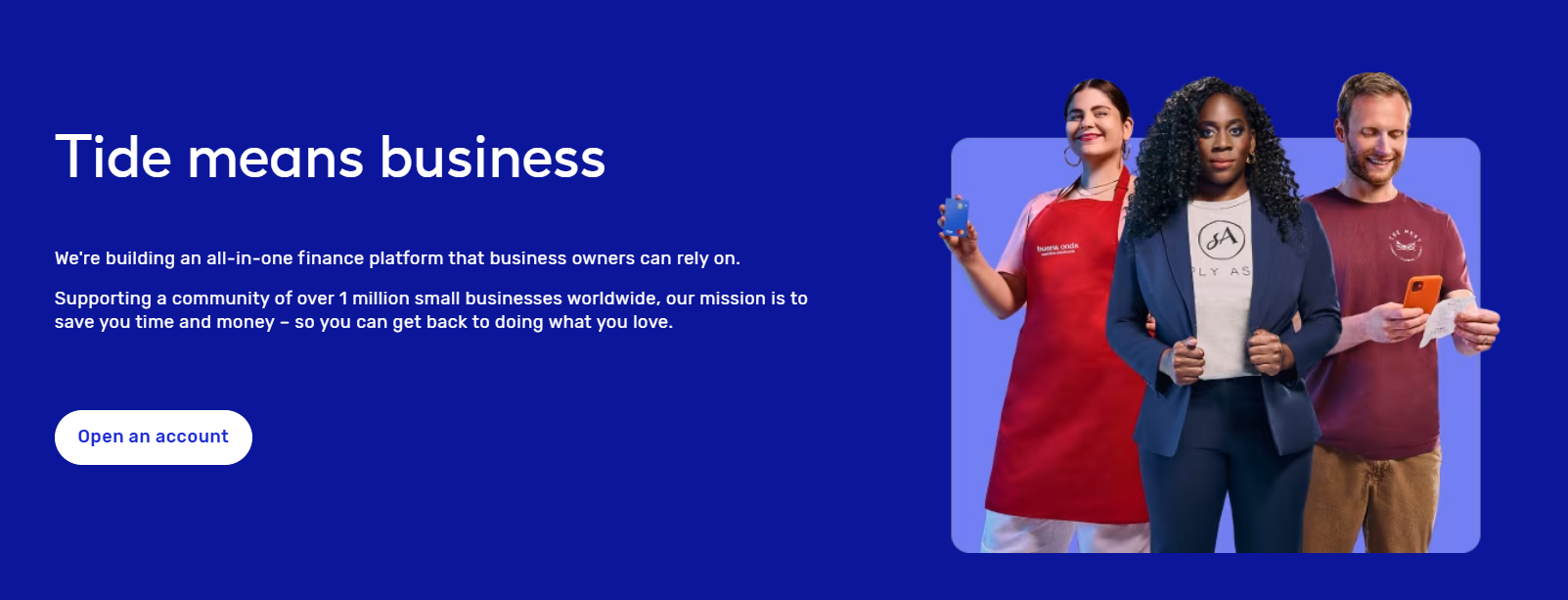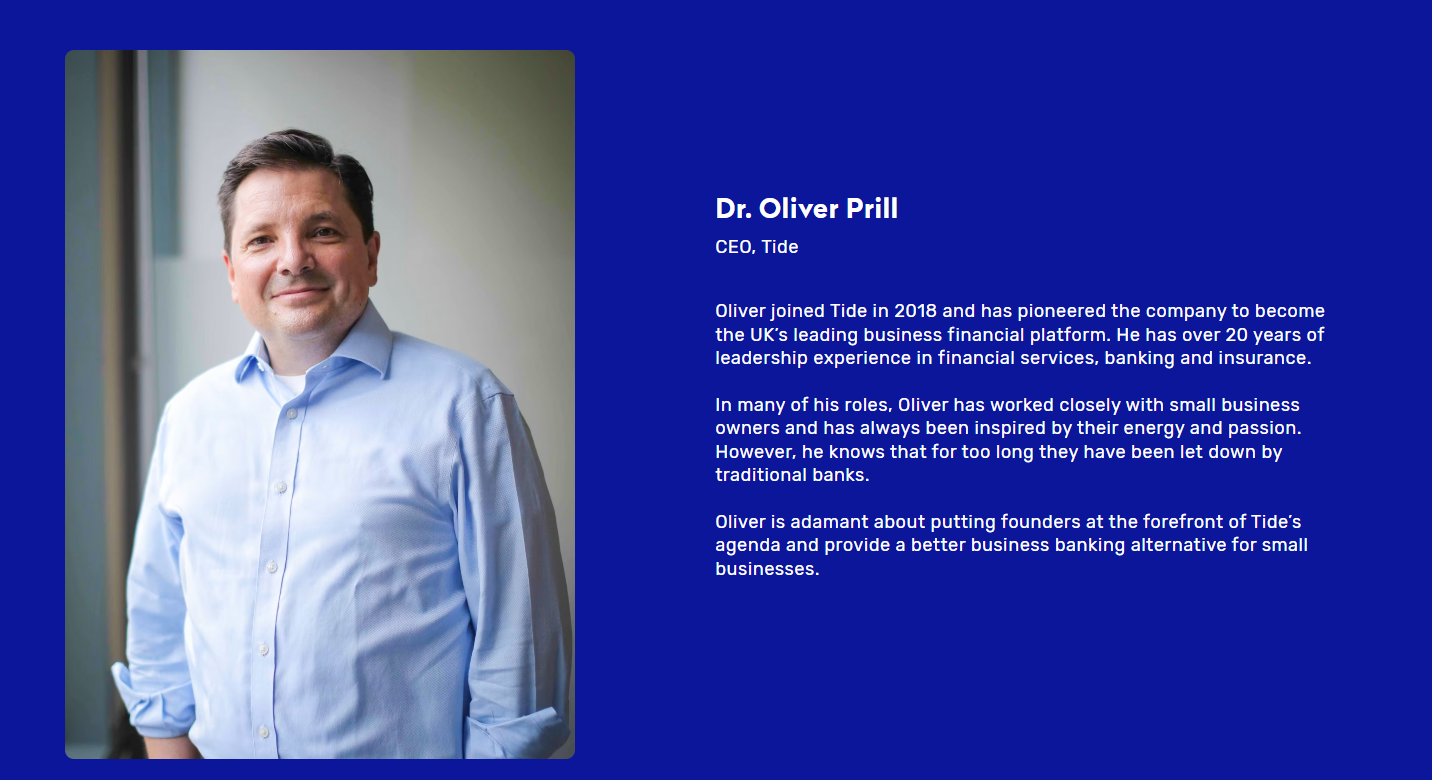What is business storytelling?
Business storytelling is the art of sharing the experiences behind your brand, employees, customers and advocates. It allows you to build a narrative and connect with your audience on an emotional level.
The question is, how does this translate to business goals? According to a study by HBR, by implementing emotionally motivating connection-based strategies in customer interactions and experiences, one retailer increased its number of active customers by 15%. Furthermore, it went on to increase the rate of same-store-sales growth by more than 50%.
Connecting with your customers in this way fosters brand loyalty and makes your brand more memorable, relatable and inviting. In a world where we’re bombarded by information, a great story helps you cut through the noise and grab the attention of customers who will feel passionate about staying with you for the long-term.
Top Tip: When you build a relatable brand that strikes a chord with consumers, you stand out from the crowd and establish meaningful connections. To learn more about how to foster customer loyalty, check out our guide on how to build brand loyalty with relationship marketing 🔨
In an article for Forbes, Mike Kappel, owner of Patriot Software, shares the following advice:
“[Our] story started in the basement of a factory with no heat, no air-conditioning, and floors that would flood. Instead of customers, we had rats, birds, snakes, and flies. We ran out of money, maxed out our credit cards, and borrowed from relatives…
Not the prettiest opening to a story, right? But, it’s honest. Our “can-do,” “just-works” small business customers appreciate that, and they relate to the tough, early days of launching a start up. By hearing our story and knowing why we do what we do, they know that we understand their needs.”
Mike Kappel, owner Patriot Software
This is what storytelling is about; defining your brand while building an emotional connection. What it’s not, however, is an advertisement or thinly veiled sales pitch.
Now you know why storytelling is an important component of your marketing strategy. Let’s dive into some actionable tips for crafting effective stories that attract your ideal customer.
Top Tip: Regardless of the quality of your product or service, you must prepare a promotional plan that places your new offering in front of your target market. To learn what a go-to-market strategy is and what it entails, read our guide on how to build an effective go-to-market (GTM) strategy in 5 useful steps ⛳
1. How to build a strong connection with your customers
In an article for HBR, Lani Peterson recalls an essay written by Leo Widrich titled “The Science of Storytelling: What Listening to a Story Does to Our Brains.” Here, she quotes the following insights:
“[T]here’s research to suggest that when we hear a story, not only are the language processing parts in our brain activated, but any other area in our brain that we would use when experiencing the events of the story are, too.
For example, sensory details like ‘the client was as excited as if he had won the lottery’ engage a listener’s sensory cortex. Action words like ‘drive this project home’ engage the motor cortex, all leading to a more connected and richer experiencing of the message.
In short, the more a speaker conveys information in story form, the closer the listener’s experience and understanding will be to what the speaker actually intended.”
Lani Peterson, professional Storyteller and Speaking Coach
This summary by Peterson reinforces the fact that stories are essential to capturing your audience’s attention. By injecting real-life, human experiences into your engagement efforts, your advocates will connect on a deeper level to the message you’re trying to convey.
With that in mind, here’s how to engage with your audience and build emotional connections.
Keep them wanting more by building suspense
When communicating and creating content for your customers, create a story that not only draws them in, but piques their curiosity. It should leave them wondering, “what will happen next?” If they aren’t thinking that, you’ve lost them to whatever’s next on their newsfeed.
You could use episodic content or teasers on social media to drive audiences back to your website to learn more. This makes them more likely to remember your message while connecting with them on an emotional level.
Here is an example of one of our members, Laura Adrianna, founder of Kleen App, using suspense to engage and incentivise customers.
We created content that Instagram loves—high-quality photography and copy that champions Laura’s mission. We added a link to the blog in our bio for those who wanted to read the full piece and learn more about one of the most compelling facts about her company: cleaning cars without water.
This strategic use of suspense helps get the most out of your content. Use other channels to repurpose elements of your story, and use suspense to entice them to learn more.
Top Tip: In order to leave a lasting impression on your customers, you need to implement a consistent brand presence across all of your channels. To learn how to boost awareness and build an engaged audience, check out our guide on how to build a brand that customers love in 7 steps 💘
Evoke your audience’s desires and aspirations
Everyone has a dream. Figure out what your customers aspire to do or be, and tell a story that reflects that aspiration.
Great content empowers and enables people to do better. While actionable and practical content helps your readers get results, stories show them that people just like them have achieved what they want to achieve. It’s proof that their dreams are possible.
This can work in any market across any topic. For example, Huckberry, an e-commerce company for adventurers, uses their blog to share stories about their customers and products:
In the example above, one of their ambassadors, Ben O’Meara, put one of their products to the ultimate test. He wore the “72-Hour Merino Tee” and wore it for exactly 72 hours, travelling around the Canadian wilderness by car and canoe, camping out near the beautiful landscapes and visiting various breweries along the way.
Not only is this an interesting method of promoting a product, but it taps into the interests and desires of Huckberry’s audience. This story of adventure, coupled with some gorgeous photography, was bound to grab the attention of their readers, and most likely sell a few shirts in the process!
How can you do this yourself? First, make talking with your customers a habit. Understand what drives them, motivates them, inspires them, makes them get out of bed in the morning and what they care the most about.
Learn what your customers aspire to be, then create content that tells stories and subsequently empowers them to reach these goals. These stories then support your mission and, as an added bonus, promote your product and services.
Top Tip: Instagram boasts one of the highest engagement rates across all social media channels. To take a deep dive into Instagram marketing and learn how to attract more followers to your page, read our beginner’s guide to Instagram marketing for small businesses 💬
Show you care by demonstrating empathy
Empathy refers to the ability to understand and share the feelings of another person. What can you do to show your audience you understand how they feel?
Many of our readers are first-time entrepreneurs who are just starting out. Which is why we share stories from our members from different industries and business models. By showing how they overcame their own obstacles and challenges, our audience can better grasp and connect to what they are about to face.
For example, Stephen Skeete, founder of Tress Clothing, started his business around the same time his first child was born:
Running a business and raising children is something many entrepreneurs struggle to balance. Sharing not only how someone is achieving this balance, but why they do it, connects with the reader and helps them relate to their journey.
In Stephen’s own words; “I want to do it for her, and the people around me. I need to show her that we all need to follow our dreams.” His desire to show himself (and the world) what he’s made of drives him towards success.
You can only demonstrate this level of empathy by understanding your customers on a personal level. We would never be able to tell the story above in our own words. Only Stephen, and what he has experienced could do that for us.
The 5 C’s of storytelling
When done right, business storytelling can add meaning to your marketing. You’ll engage your audience, support and educate them. Over time, this builds trust with your wider audience and fosters loyalty.
Check that your business storytelling utilises the fascinating five C’s.
Circumstance: Establish the context of your story. Always set the scene. A good introduction will tell the audience what they need to know straight off the bat and will help them understand your narrative.
Curiosity: This is how you draw your audience’s attention and keep them engaged. Using curiosity in your business storytelling will spark your prospective clients’ interest and create a thirst for knowing more.
Characters: Make your stories more relatable by adding a human element. When your audience is presented with a real person, they’ll root for them and will be eager to learn about your solution. It adds authenticity to your messaging.
Conversations: People respond to conversation better than a list of numbers, statistics or figures. Avoid ‘corporate speech’ and be conversational by matching your business personality and tone to your audience’s.
Conflict: This is the problem your character faces, or a goal they’re dreaming to achieve. For example, our member stories often demonstrate how one founder discovered a need, and the brilliant solution they used to fix it.
Nike nailed these principles in their “Dream Crazier” campaign. Here, they championed women who excelled in different sports:
The character is a broad one: women across the world challenging an outdated system and demonstrating “what crazy can do”. But it translates across all walks of life—especially business.
Top Tip: Compelling storytelling is highly valuable to a small brand. But if nobody sees your stories, they won’t have the desired impact. To learn how to get in front of your desired audience, read our guide on how to create a complete digital marketing strategy for small businesses ⛅
3. Share your brand’s story
When looking to learn more about a company, we often head straight to the “About” page.
Here you usually find everything you’d like to know about the business—from how they got their start to the company culture they’ve built.
A good About page should contain the following information:
The story of how you got started and why the business exists in the first place
Your company’s mission, and what you want to achieve
Information on your team, what they do and perhaps their interests
How they can get involved and join your cause
If you have a story of why and how you started your business, then the About page is the place to share it. It humanises your brand, providing context and meaning around why it exists.
But beware of sacrificing what makes you unique in an attempt to sound professional and trustworthy. Stuffy copywriting makes it difficult to connect with your brand. Be authentic and use a personalised tone when sharing your story. Share the process behind your production and supply chain processes, as this level of transparency is valued more and more in today’s climate.
On our own About page, we dive straight into why Tide exists. Our goal is to attract those who share our convictions, and make our cause clear from the beginning:
We also showcase the people behind our company. Our About page isn’t about attracting new members, but mostly to attract potential hires who are interested in joining us and building their careers:
Finally, we put a spotlight on our CEO, Oliver Prill:
Looking for a proven formula to create your own About page? Check out this template from Shopify that you can use to get started:
About page story template:
[FOUNDERS] started [COMPANY] because [EXPLAIN PROBLEM OR GAP
IN YOUR MARKET].
That’s why [SHARE YOUR JOURNEY TO BUILDING THE SOLUTION].
Along the way, [SHARE YOUR BIG WINS AND MILESTONES].
When writing your About page, talk in the first person. This is one of those rare marketing moments where writing “I” and “we” is okay, as it’s all about you.
4. Drive business results with case studies
You now have a better understanding of why engaging with your clients and customers through stories will help attract a wider audience.
Now that you have their attention, how do you convert them into customers?
When prospects are considering your company, there’s no better way to prove you can bring results than with a case study.
What are case studies?
Case studies act as success stories that share exactly how a specific customer solved an issue with your product or service. They usually outline the pain a customer was feeling (one that’s shared by the market as a whole) and illustrate a path to the solution and a “better world”.
Case studies should educate your prospective customers on how they can solve their own problems with your help.
They’re also a great way to tell the world how valuable your products or services are, as they showcase your success beyond testimonials.
Here are three tips to keep in mind when writing case studies in your business:
1. Tell the story from start to finish
A great case study will allow your prospects to really get to know the customer you’re featuring. Just like a good story, they’ll want to finish it once they start reading.
While not case studies in the traditional sense, we feature our members and their stories in “Member Spotlights” because we want to inspire others. And what better way to empower our audience than sharing stories of how other entrepreneurs achieved their goals and overcame hurdles?
For example, we shared the story of Kate and Ali Guindi who started Pottery & Pints, a business that teaches pottery-making in pubs.
Our readers discover the story of how this mother and daughter team started their business, and how Tide ensures that their finances are within easy reach. In their own words:
“The app is so easy! I always forget my pin number, and my bank would post me a new pin in three to five days. But I can get a reminder in the app in seconds. It’s a small thing, but for me, it’s like ‘Oh, thank God!’”
Words like these are a powerful way of proving we can deliver on what we promise.
2. Experiment with different formats
While some people enjoy reading, others may prefer audio or video representations of your case study. Consider taking your text-based case studies and repurposing the content as videos, social media posts or even infographics.
When we interviewed Stephen of Tress Clothing, we recorded the interview and published the video across social channels:
This allows us to put our personalities forward. Viewers can learn more about Stephen’s story and connect with him on a deeper level.
To do this effectively, plan ahead and make your case studies a “video-first” initiative. Record your interview and repurpose the transcript into a written, story-driven case study.
Top Tip: Social media channels are a cost-effective, flexible way to build brand authority and grow your followers. To learn how to develop an effective strategy and what type of content you should post, read our guide on how to create a social media marketing strategy for your small business 🚀
3. Make case studies easy to find
There’s no point crafting a great case study if no one will ever see it. Your content must be organised and easy to find.
A simple but effective way to put your case studies in front of readers is to include a link in your websites’ main navigation menu, or at the top of your blog.
For example, we feature our member spotlight section on our main blog page:
Additionally, we supplement some of our regular blog posts with nuggets from our case studies, making it even easier for readers to find our real-life member stories.
Here’s an example of how we referenced a case study of ours inside a small business accounting article:
However you do it, make sure it’s easy for people to find—especially those who are almost ready to buy from you and need some extra convincing.
5. Get inspiration from these business story examples
Great business storytelling is about showing, not telling. So we’d be remiss if we ignored our own advice and wrapped this guide up without sharing some of our own examples.
It’s important to see the principles we’ve shared in action. Here, we share five storytelling examples from our very own members for you to draw inspiration from:
1. Scoodle
Positive company news fosters a true emotional connection. Sharing what you and your employees are up to brings a whole new dimension to your marketing initiatives.
Take Ismail Jeilani, founder of Scoodle, an app that helps connect students with tutors. He was recently invited to Downing Street to discuss all things business and start ups.
Scoodle shared a blog post about his visit, which educated his audience on the topics he discussed, but also positioned him and his company as experts in the education field.
2. Ian Anderson Gray
Business storytelling isn’t just for companies. Freelancers can use these techniques to share the stories behind their work, too. For example, Tide member Ian Anderson Gray quit music to become a social media guru.
His About page uses a tone that makes him approachable. Ian manages to list his accomplishments without sounding like he’s bragging.
If you’re a freelancer, it’s important to demonstrate your capabilities. But sometimes, it’s also important to be personable. Inject some personality into your content, and share what you believe in. You’re more likely to attract like-minded people, and thus the best clients for your business.
Top Tip: The world of freelancing has grown exponentially in recent years. As a freelancer, you need to establish a consistent pool of clients that provide you with quality and reliable work. To learn more about freelancing and the best methods to obtain new clients, read our article detailing 32 proven ways to increase your clients as a freelancer 💈
3. The Kari Club
When sharing your brand’s story, focus on the things that make you human and approachable.
That’s precisely what Minesh Agnihotri has done with his business, The Kari Club. The Kari Club will source, prepare and deliver fresh ingredients for people to create authentic Indian meals.
Their ‘The Story’ page embodies everything we’ve tackled in this business storytelling guide. It starts at the beginning, documenting Minesh’s childhood trips to India, from their modest founding in 2001 all the way to what they’ve accomplished now. Photos help prospective customers connect with the founder and create an emotional bond:
There’s heritage in the story. It’s not just about the business, but the history behind what the business does.
4. Harry’s
Another example of a similar nature to The Kari Club is Harry’s, a shaving subscription service for men. While they’re a fairly modern brand, the factory they acquired has been active since the 1920s:
The factory isn’t just a product feature or credibility booster; it’s a character in their narrative. Harry’s use their factory as a way to build upon their story while assuring confidence in their product.
5. Groove
Back in 2013, a small start up named Groove was growing in popularity. The company offered a customer service platform, rivalling the likes of Zendesk and Help Scout in a highly competitive space.
While the product they offered was attractive, their blog was what caught people’s attention.
Where their incumbent competitors zigged, Groove zagged; blogging about their start up journey and their goal of reaching $100,000 monthly recurring revenue:
This business storytelling strategy generated a huge amount of attention in the start up space and was part of the reason they ended up reaching their revenue goal in 14 months. Instead of creating content around various customer service topics (which had already been covered extensively), Groove shared their business journey.
Wrapping up
Your customers are human beings who crave connection and are influenced by emotions, just like the rest of us. Stories help us to make sense of the world around us, evoke our feelings and drive our actions.
Your audience will be browsing your company website, content and social media presence. Use business stories on those platforms to answer these questions:
How is your small business different?
How can you help?
Why should they buy from you?
Business storytelling can help you grab people’s attention, invoke curiosity, spark emotion and be memorable. That’s what turns stories into leads and leads into customers.
It’s also what will help you attract and retain the best talent to work for your small business. The sooner you master the art of business storytelling, the better. Utilising this mechanism is one of the most important factors in achieving marketing success.
















